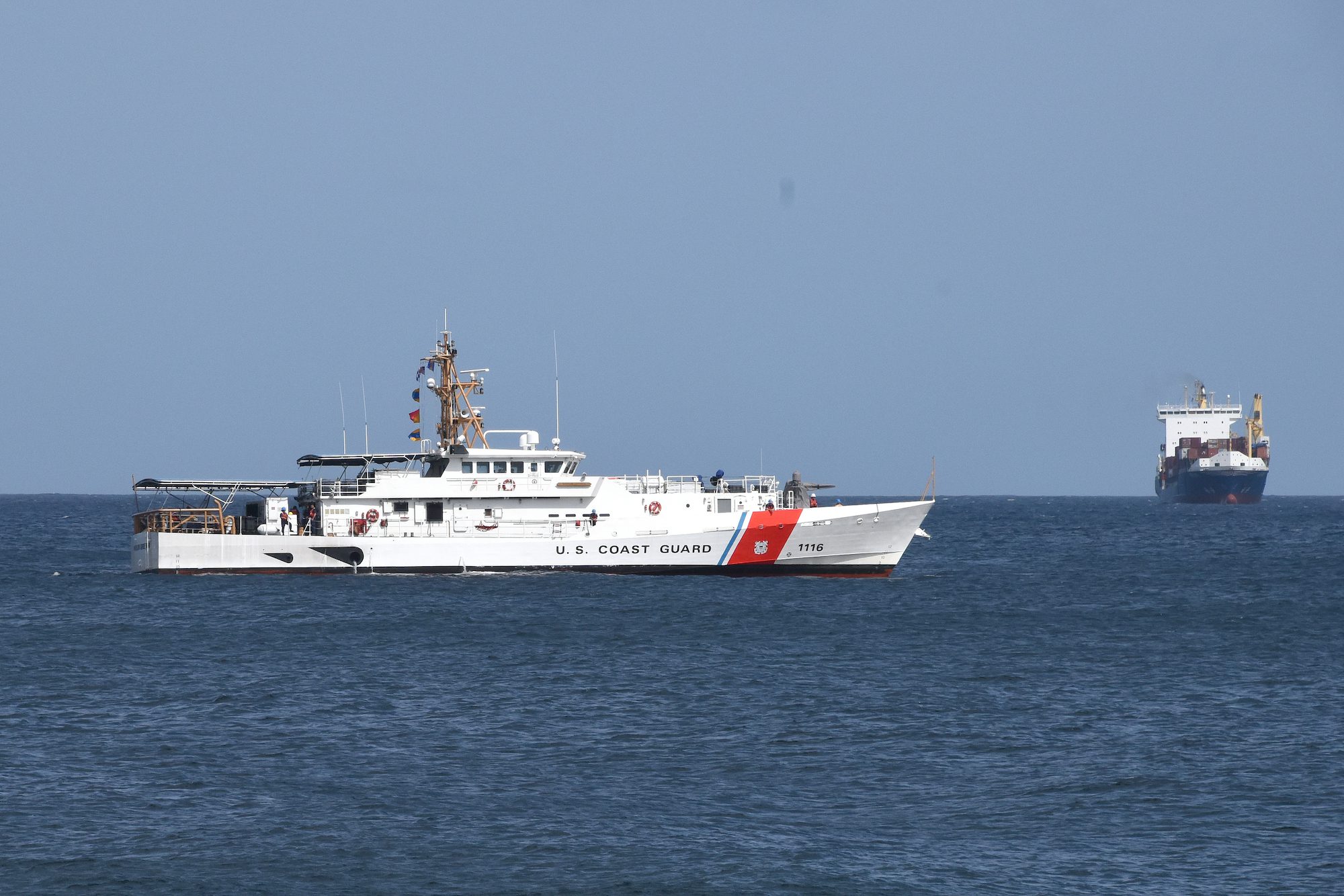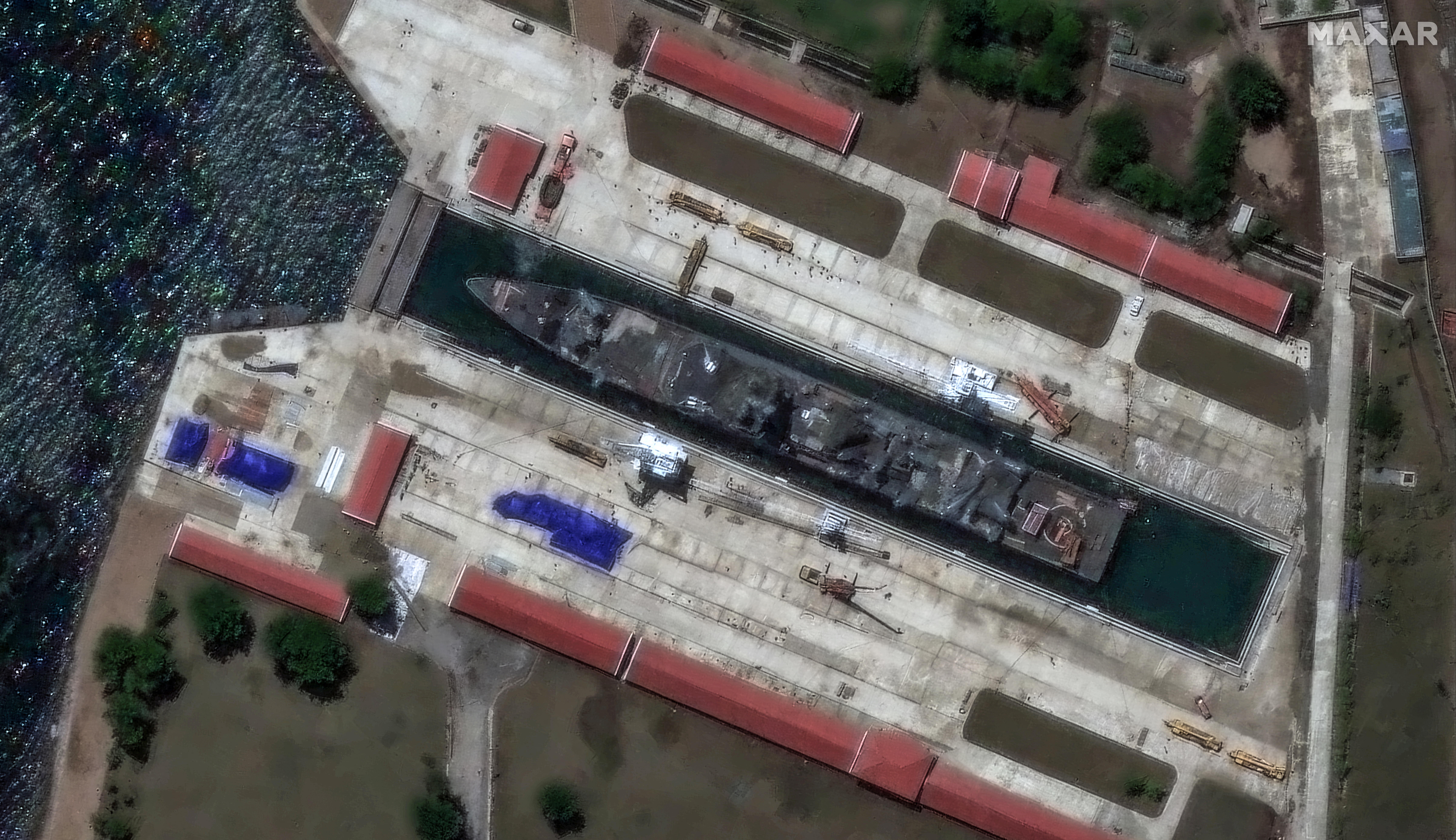The National Transportation Safety Board (NTSB) has determined that the fatal collision between the U.S. Coast Guard cutter Winslow Griesser and a small boat off the coast of Puerto Rico last year was due to the failure of either vessel to maintain a proper lookout.
On August 8, 2022, the USCGC Winslow Griesser and the center-console boat Desakata, with two people on board, collided off the northern coast of Puerto Rico, resulting in one death and a serious injury aboard the boat and its total loss valued at $58,800.
Leading up to the collision, neither crew saw the other despite having the opportunity to do so.
The investigation found that none of the Winslow Griesser’s 21 crew members was designated solely as a lookout. The NTSB noted that Coast Guard practice is that all members of the bridge watch are responsible for shared lookout duties, however investigators determined no one was maintaining a lookout at the time of the collision.
Investigators also found that no one the Desakata was maintaining a proper lookout at the time of the collision, as they were too focussed on fishing.
Maintaining a proper lookout is a fundamental rule for vessels to prevent collisions at sea. NTSB investigators found that the bridge crew on the Winslow Griesser was not aware of hitting anything until they saw the wreckage of the center-console boat floating down the side of the cutter.
“The NTSB continues to investigate tragedies like this collision in which vessels are not maintaining proper lookout,” said NTSB Chair Jennifer Homendy. “Early detection of a vessel is critical to avoiding a collision. While technology does not remove the need to maintain a proper lookout, it can aid in early detection, which is why we are issuing a safety alert for small vessels to encourage installing a radar reflector and/or an automatic identification system transponder to improve their detectability.”
The NTSB has recommended that the Coast Guard install voyage data recorders on its cutter fleet to provide additional information on collisions. The NTSB also issued a safety alert encouraging owners of recreational boats and small commercial fishing vessels to improve their vessels’ detectability by installing radar reflectors and using simplified automatic identification system transponders.
Investigators said contributing factors included the failure of the Winslow Griesser’s commanding officer and officer of the deck to take sufficient measures to increase situational awareness while the cutter was traveling at a high speed.
During the investigation, several crewmembers of the Winslow Griesser declined to speak with NTSB investigators. If the Winslow Griesser had been equipped with a voyage data recorder, or VDR, the additional data and audio could help identify safety issues, resulting in safety improvements.
“As the only independent investigator of U.S. Coast Guard casualties, it is vital that NTSB investigators have information from voyage data recorders or equivalent capabilities to ensure a complete, timely and thorough investigation,” said Chair Homendy. “Voyage data recorders, like black boxes in airplanes, are one of the most valuable sources of information following a marine casualty and it is imperative that Coast Guard cutters be equipped with this technology.”
The Coast Guard’s investigation into the accident, which concluded in July, came to a similar conclusion; that neither the Winslow Griesser nor the Desakata saw one another and, as a result, failed to take appropriate action that could have avoided or reduced the severity of the collision. However, the investigation board failed to factually conclude that the Winslow Griesser failed to maintain a proper lookout, despite evidence that suggested this was the case. The investigation board also determined both vessels failed to maintain a safe speed.
Marine Investigation Report 23-14 and the safety alert are available on the NTSB website.

 Join The Club
Join The Club











